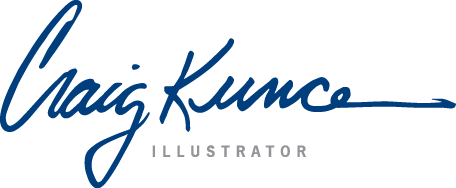Graphic Design & Marketing / Comprehensive Design & Troubleshooting
Students: This is an example of what your Behance presentation page should include.
1. Summary
Address these five categories in your project summary
1. Project Objective
Define your objective here. What are you trying to accomplish for your client? Describe the brand message you are trying to communicate to their customers. Keep this paragraph short, but informative.
Define your objective here. What are you trying to accomplish for your client? Describe the brand message you are trying to communicate to their customers. Keep this paragraph short, but informative.
2. Research
What did you learn about your client's industry? What is the rest of the industry doing? Learn about the industry so you do something that is appropriate and fitting, but still original. Look at competitor brands, websites, commercials, ads, packaging, etc.
Is everyone currently using blue or red for their primary brand color, and a clear glass bottle for packaging? Tell us how you are going to use green and then use green colored glass to be different and stand out on the grocery store shelf.
3. Concept and Solution
This should be your longest paragraph. Describe how you are visually communicating your client’s message to their customers. Tell your story. What do you want the customers to think of when they interact with your design work? How will they feel? Did you wait under an umbrella for hours to get just the right photo of their sidewalk bistro filled with happy customers? Did you draw upon the surrounding historical buildings for the logo art, design elements, and background photos? tell your story and inject personality into your description.
This should be your longest paragraph. Describe how you are visually communicating your client’s message to their customers. Tell your story. What do you want the customers to think of when they interact with your design work? How will they feel? Did you wait under an umbrella for hours to get just the right photo of their sidewalk bistro filled with happy customers? Did you draw upon the surrounding historical buildings for the logo art, design elements, and background photos? tell your story and inject personality into your description.
4. Brand Message
Sum up, in 3–5 words, what it is you are trying to communicate.
5. Target Market
Define who your customers are. Give 10 characteristics (age, beliefs, family status, career, education, income, hobbies, interests, home ownership, etc.)
Show the best example you have of this project first. Get your viewer excited about your design work!
2. Developmental Work/Sketches/Thumbs
Whatever you have for developmental sketches should be shown here. Employers like to see "behind-the-scenes" and view how you come up with ideas.
Could be digital drawings, thumbnails, photos of your sketchbook pages, etc.
3. Brand Standards
Brand standards set the tone for your brand and ensures consistency. Whether you, a colleague, a printer, outside design firm, or an industry partner is designing collateral for your brand, these important standards keeps everything looking like it goes together—effectively communicating the visual brand.
Brand standards = brand consistency = brand identification = brand loyalty
Show at least:
• Primary Logo
• Black and white logo
• Brandmark
• Brand color(s)
• Brand typeface(s)
• Brand color(s)
• Brand typeface(s)
Consider showing:
• Inspirational photos or elements
• Reversed logo
• Taglines
• Staging guidlines
• Inspirational photos or elements
• Reversed logo
• Taglines
• Staging guidlines
4. Marketing and Advertising Material
You will choose and design 1–3 pieces of marketing collateral for your project. Make sure your design work reinforces your brand and helps deliver your message to your target audience.
If possible, take photos of your final mock ups and put them on this page. They look professional and make them look realistic.
5. Presentation
Your Behance project page is your presentation.
Did you know that you get a free portfolio website if you have an active subscription to Adobe Creaive Cloud? Cool feature.
